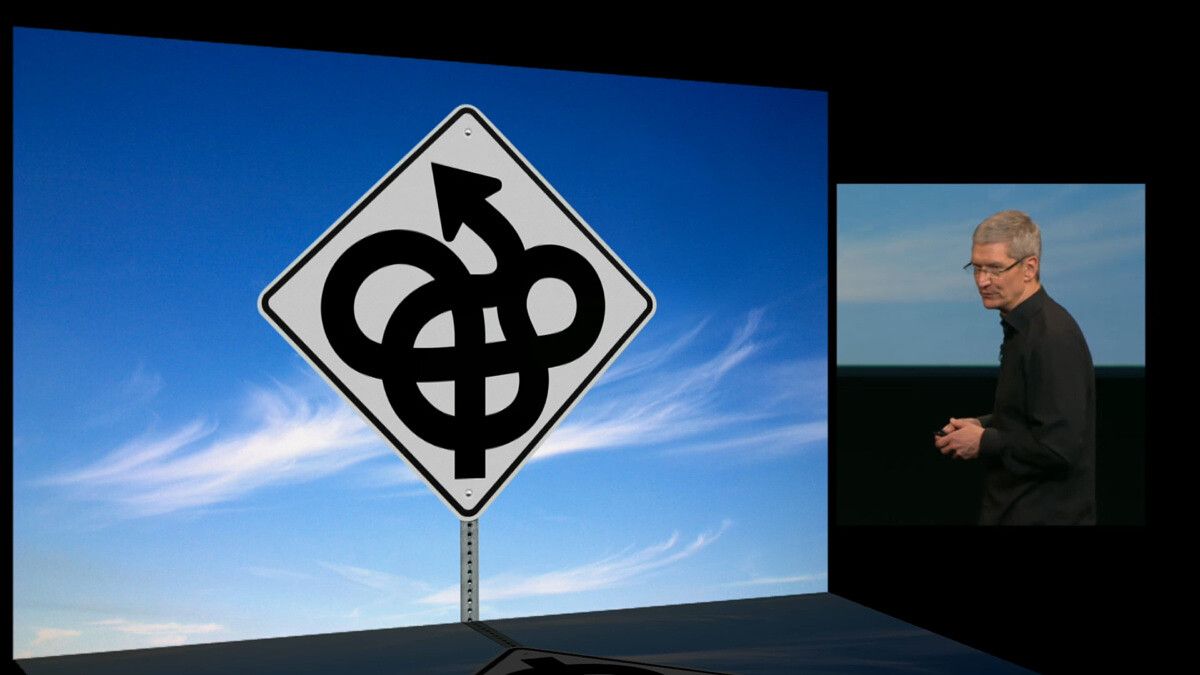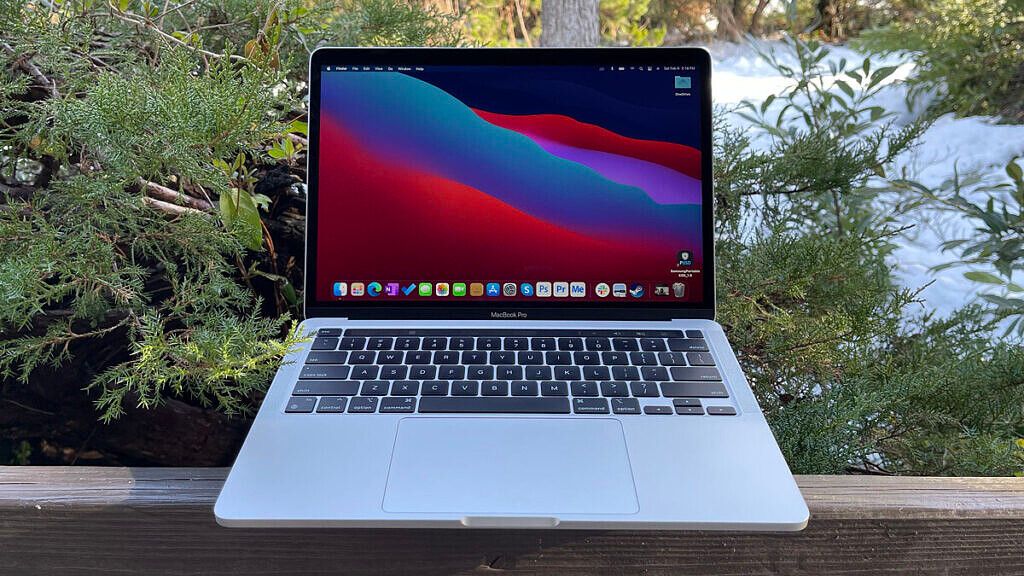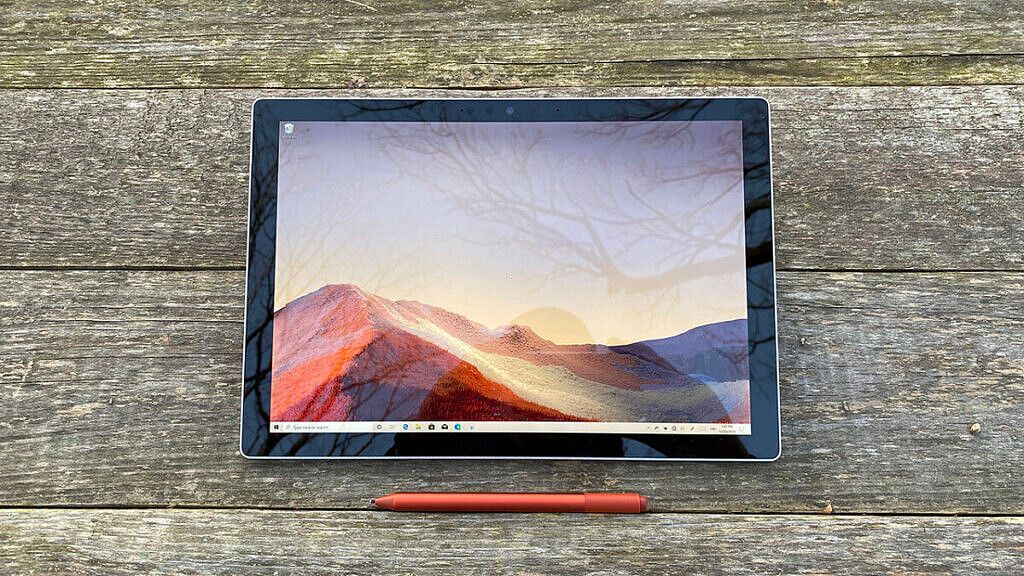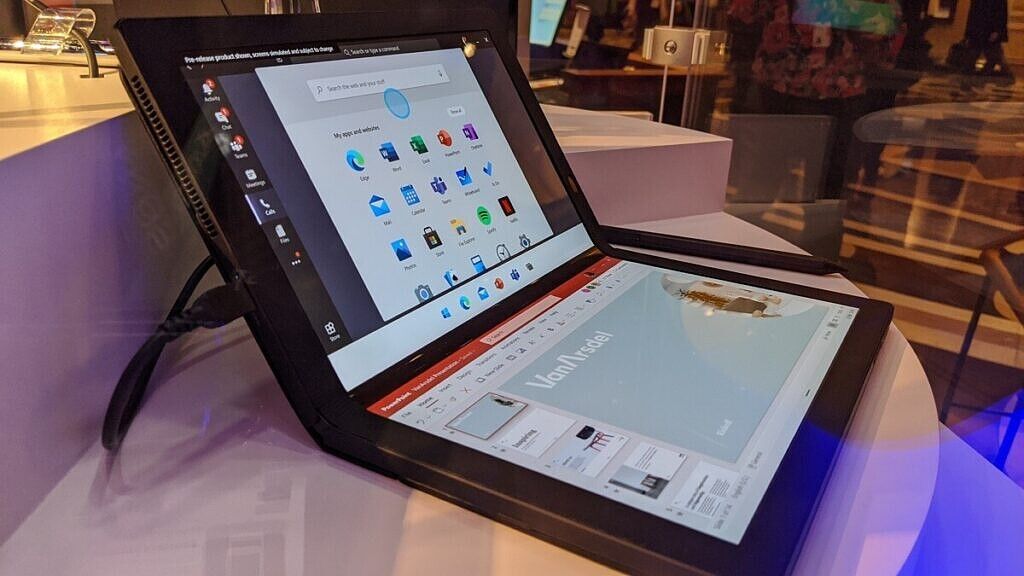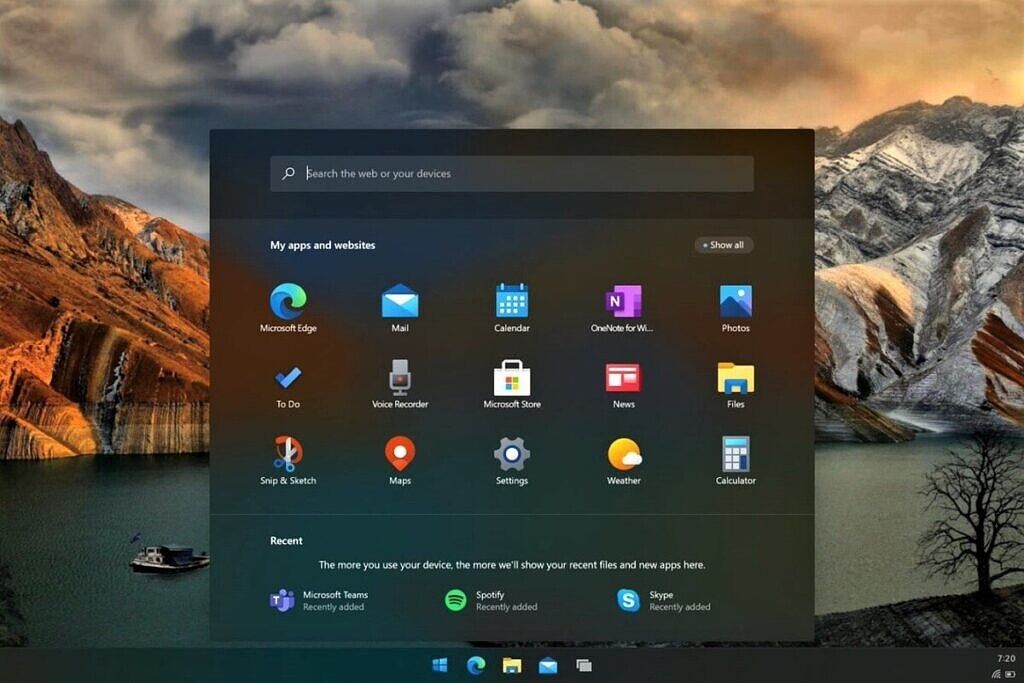It was 2010 when Steve Jobs introduced the iPad, a so-called “third device” that sat comfortably between a smartphone and a laptop. Jobs said that in order for that to work, the product needed to be better at some things than its siblings. He used cases like reading as examples, and those use cases were a far cry from today's iPad Pro.
It was two years later that Microsoft introduced its own tablets, called Surface. In the beginning, there were two devices: The Surface RT and the Surface Pro, the former of which used an ARM processor and a version of Windows that supported it, while the Pro used an Intel chip and regular old Windows 8.
I can’t help but think back to when these devices were first presented to the world, in light of last week's event when Apple announced that its tablet is getting the same processor as its MacBook Pro, along with similar memory configurations. Apple had come along with this idea for a third device, and Microsoft was the one that was trying to cram a computer into a tablet that would be your only device. Apple’s strategy has evolved over time, but Microsoft’s hasn’t too much.
Microsoft clings to its legacy software
Microsoft used the opposite strategy as Apple, and it’s catching up to the Redmond company. That original iPad ran iOS — a bigger version of the operating system on iPhones — which is now iPadOS. The Cupertino firm has spent over a decade taking a modern, mobile platform and building it up to be more feature-complete for productivity. Meanwhile, Microsoft has been working hard to get its legacy desktop operating system to work on tablets. Apple has been building up while Microsoft is trying to scale down.
For a long time, it worked out too. Back in 2014 when the freshly redesigned Surface Pro 3 came out, a consumer who was deciding to replace a laptop with either a new one or one of those fancy new tablets might have settled on a Surface, hoping to get the best of both worlds. This was shortly after the 2013 iPad Air announcement when Tim Cook said of Microsoft, “Our competition is different. They’re confused. They chased after netbooks. Now they’re trying to make PCs into tablets and tablets into PCs.”
At the time, Cook was talking about Windows 8, a version of the OS that will go down in infamy. It had separate touch-centric and desktop environments that worked completely differently from each other. On top of that, there was little instruction on how to use the radically redesigned operating system. Windows RT was even worse because it looked exactly like Windows 8, including the desktop environment, but it didn’t have support for desktop apps.
Microsoft had a different vision than Apple did
Indeed, back then, Microsoft truly thought that the future of computing was tablets and touchscreens, and it went all-in. Windows 10 was the answer that was meant to fix these issues, and the company has been trying to get tablet mode right ever since. For example, there are all kinds of inconsistencies in the UI. That's partially because tapping the screen can do different things. If you’re using a classic desktop app, a UWP app, or one of the many other kinds of apps found on Windows, you can get different results.
With a Surface Pro, it wasn’t particularly good at being a tablet, but the key advantage was that that you could always run full desktop apps on it. It was a real computer. The iPad, on the other hand, long held a reputation for being a consumption device, even a Kindle competitor in its early years. Microsoft’s leg up on the iPad was always that you can do real work on the Surface.
This continued when the first iPad Pro was introduced in 2015. Apple added an attachable keyboard and Pencil support. Naturally, at the time, it simply looked like the company was copying Microsoft Surface, except with a more limited operating system.
iPadOS spawns from a modern operating system
Apple started out the iPad’s life with a somewhat simple operating system that at the very least, was comfortable to use on a tablet. And it worked. It did what it was supposed to do, and it got better over time. When iOS 13 was announced at WWDC 2019, Apple rebranded the iPad variant of the operating system to iPadOS.
Today, iPadOS supports mouse and trackpad input, and Apple supports universal apps that can run across iPhone, iPad, and macOS. Even apps like Adobe Photoshop and Illustrator are available on iPad now. On macOS, the company’s ARM processors can emulate Intel apps, and of course, on iPadOS, it never had to.
Apple has done something that Microsoft has tried many times to do: It made ARM work. The plan was there all along. It started building custom processors in its iPhones and later iPads. Eventually, they got to be so powerful that they showed up in Macs.
Oh, and Apple is using modern hardware in the iPad Pro too
Now, Apple put an M1 chipset in an iPad Pro. Meanwhile, Microsoft currently has an Intel-powered Surface Pro 7 that hasn’t had a significant visual refresh in about four generations. If we’re putting the two head-to-head, Apple has caught up to Microsoft. If you disagree, that’s fine too. Because if not, Apple will catch up next year, or the year after that. The fact is that Apple is moving forward with a modern operating system and Microsoft is mostly stagnant, depending on how its upcoming Windows 10X bet plays out.
Here are some plain numbers, though. Rendering a two-minute, 13-second video in Premiere Pro took three minutes and 13 seconds on a 13-inch MacBook Pro with an M1 processor. On a Razer Book 13 with Intel’s 11th-generation processors, it took four minutes even. And that’s just video rendering times when comparing the two platforms.
On top of that, the MacBook Pro had half the RAM that the Razer Book did in that test. Part of why that’s OK is because the memory is just better. Apple uses something called unified high-bandwidth memory (HBM) architecture, which is available to the whole chipset. The memory is on the chipset, and it can be accessed by the CPU, the GPU, and Apple’s Neural Engine, rather than each of those having their own memory and having to move that data around.
We’re not talking about the usual 10% or 15% gen-over-gen improvement on the new iPad Pro. Apple is promising a 50% CPU performance boost over the previous model with the octa-core CPU in the M1, and the octa-core GPU offers a 40% increase in graphics performance. There’s also a 16-core Neural Engine for AI and machine learning tasks.
To put it in simpler terms, this hardware is just incredible. Apple has taken its iPad to a level that competitors like Microsoft can’t reach. That’s what happens when you own the full stack; you can control every little bit of the hardware and software to make the best product.
It’s a different wheelhouse at this point
The other fact is that Microsoft really doesn’t care as much. Surface is becoming more and more a business brand. What businesses want from a product is simple. They want more of the same. They want Windows 10 because it’s what they’ve standardized on for years, and they want a new Surface Pro in the same chassis because it will fit all of their docks and peripherals.
The last time the display on the Surface Pro changed was in 2015 with the Surface Pro 4; the size was increased from 12 to 12.3 inches. It’s remained the same since, and if you look at a Surface Pro today, it definitely looks like something designed in 2015.
Meanwhile, Apple just added Thunderbolt to the iPad Pro. At the same time, Microsoft is quite literally the only PC OEM not to include it in its premium devices. The Cupertino firm is also continuing to trim down its bezel sizes, ditching the Home button in recent years. The iPad Pro also got a redesign back in 2018, when Apple gave it flat edges, kicking off the modern Apple design trend.
If you’re a Microsoft fan, your instinct is probably to reject the notion that the lowly tablet known as the iPad has caught up to Surface, or that iPadOS has caught up to Windows when it comes to modern devices. You’ll probably point out the things that are still missing, the best examples of which are probably Xcode and Final Cut Pro. Yes, you can indeed run full Visual Studio and do software development on a Surface Pro. But you still can't on an iPad. There’s nothing holding Apple back from doing any of that anymore though. The iPad Pro has the same chipset as the 13-inch MacBook Pro now.
But wait, there’s also Windows 10X
It’s also worth noting that Microsoft does have a modern operating system in the pipeline called Windows 10X. Sadly, we’ll just sort of have to wait and see on that one. It was originally announced as an OS for dual-screen devices, such as Microsoft’s own Surface Neo. Eventually, the Surface Neo was delayed indefinitely. It was announced that Windows 10X would come to single-screen devices first, particularly entry-level ones. From everything we’ve heard, Windows 10X sounds more like a Chrome OS competitor than an iPadOS competitor.
Windows 10X is something completely new, unlike other attempts by Microsoft to lock down Windows such as Windows RT or Windows 10 S. The Redmond company is starting fresh with its new OS. It's shedding legacy components while focusing on certain features that it thinks are staples of a modern operating system. On Windows 10X, you won’t find things like Hyper-V virtualization, Internet Explorer, the Windows Subsystem for Linux, and most notably, it’s not going to ship with Win32 app support.
That means that you’ll only be able to run apps from the Microsoft Store. And for web browsing, you’ll be stuck with Edge. The original promise was to run Win32 apps in containers so they can't affect the rest of the system. But being that this will use low-end hardware, some sort of cloud virtualization solution might be the way forward.
A more modern Windows
And as for the features that Microsoft considers to be part of a modern OS, the firm actually outlined them back in 2019, before it even announced Windows 10X. For example, Microsoft thinks that a modern operating system should have seamless updates, such as how Chrome OS updates in the background with minimal downtime. It should also be secure, always connected through Wi-Fi or cellular, support a variety of form factors, and more.
Of course, there’s also a more modern UI. Windows 10X is the tablet mode that Surface users have dreamed of since Windows 10 came out. There are no more Live Tiles. They’ve been replaced by a Start Menu that floats in the middle of the screen. You can control it with gestures too, rather than having to tap the big X in the corner to close an app.
Unfortunately, Windows 10X might never even show up in a Surface Pro. The new OS is a Chrome OS competitor, and Microsoft is gearing it towards the educational market. If we do see Windows 10X in a Surface, it will start out in a device like the Surface Go. As it stands right now, the OS still isn’t ready, and we’re expecting to hear more about it later this year.
Windows 10X is just Microsoft’s latest attempt to shed legacy components and build a modern operating system, as its competitors Apple and Google have managed to do. Unfortunately for the Redmond firm, its competitors have been doing this for a while now. Apple's iPadOS has been iterated on every year since 2007. The hardware has gotten better too.
Microsoft can't keep up with the iPad Pro anymore
Microsoft has all but lost this war, just like it did with phones, and it did so in a similar way. Apple built a brand-new operating system and improved upon it year after year after year. On top of that, it’s improved upon its hardware in a way that’s unparalleled among its competitors. It started designing its own silicon early on, so it owns the full stack. It wasn’t long after the first iPad Pro came out before people started noticing that it could do certain things better than a MacBook could.
That’s actually not the case anymore though, because the iPad Pro now has the same processor as a MacBook or even an iMac. You can configure it with up to 16GB of RAM and 2TB of storage, similar to any computer. Indeed, the hardware absolutely makes the iPad Pro one of the best computers on the market; it’s just using a modern OS, which you won’t find in any Surface.
So, the iPad Pro has a more modern operating system and better hardware. The last thing is price, and indeed, a Surface Pro 7’s entry point is $50 cheaper than the 11-inch iPad Pro. Unfortunately, that Surface Pro 7 comes with a Core i3, 4GB RAM, and 128GB storage. That base model iPad Pro comes with 8GB RAM, 128GB storage, and of course, the custom M1 processor for $799. It’s hard to argue why anyone should get a Surface Pro 7 when Apple has accomplished what it has, and at a particularly low price point.

